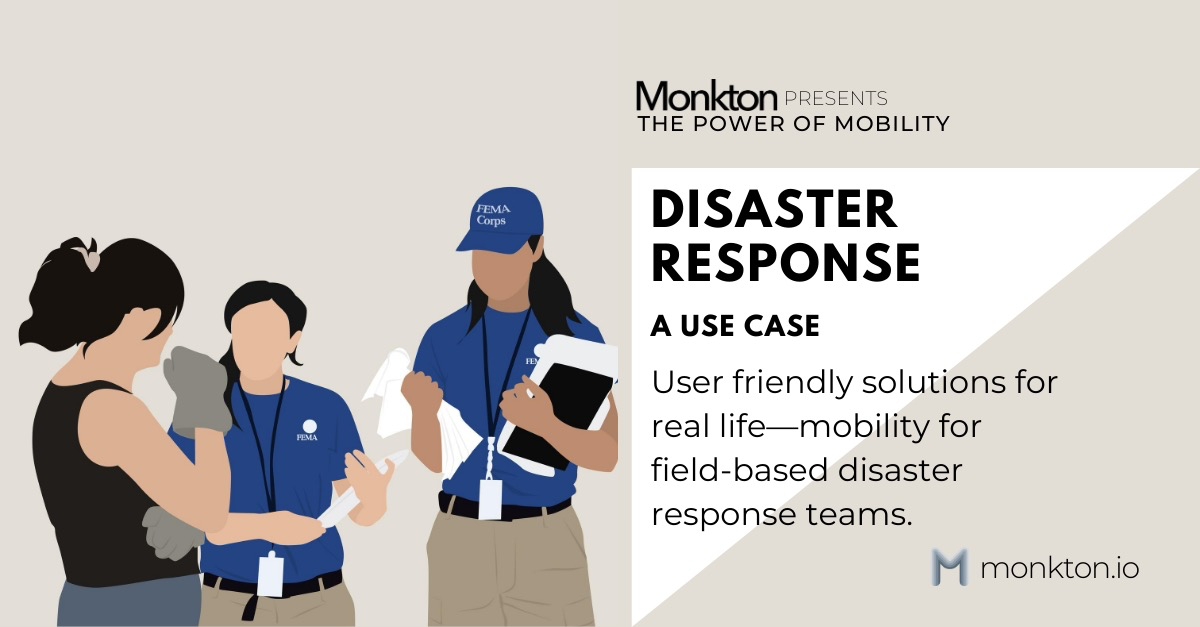When disaster strikes, the most precious resource is time–time to assemble, act, and mobilize with skillful efficiency. Speed is imperative to improve everything from field reporting, data collection, and damage assessments. With weather and climate changes in constant fluctuation, organizations must be prepared to handle a diverse array of potential disasters. Fire drills are introduced in elementary school, but what about explosions, chemical spills, hurricanes, floods, and extreme weather–what’s the plan then?
It’s generous to assume that employers are even 50% equipped to handle catastrophic events like earthquakes, tornadoes, hurricanes, and even snow or ice storms. Most companies have disaster preparedness plans, but when disaster strikes who is going to remember to open the locked drawer with the stuffed filing cabinet full of outdated, paper-based manuals/posters/flip books/building diagrams etc. Trick question–no one!
As a result of paper-based inefficiencies, there is often a lack of resources and preparedness to understand or much less handle what to do when disaster strikes. Beyond taking steps to empower employees to be better prepared for how to respond to disasters, it is incumbent that organizations like FEMA and The Red Cross are readily equipped with the resources and technology to respond with agile authority.
When it comes time to document disaster sites, mobility provides countless end to end solutions: Cameras with GPS technology allowing responders to take videos and photographs with precise damage locations; Automating manual damage assessment forms; Immediate response initiation communication; Consistent and detailed data reducing duplication; Wireless, deployable, and trackable; For emergency and disaster management, mobile solutions mean the difference between life and death.
in 2018 the National Centers for Environmental Information (NCEI) tracked U.S. weather and climate events that had great economic and societal impacts. 2018 was a very active year (4th highest total number of events in recorded history) with 14 separate billion-dollar events: two tropical cyclones, eight severe storms, two winter storms, drought and wildfires. Sadly, 2018, 2017 and 2016 have all been historic in the sheer number of billion-dollar disasters impacting the U.S. – 45 separate events in total.
Disaster Recovery at the Tactical Edge
In the case of disaster, the tactical edge is where Mother Nature deems. It could be in a town of thousands or a remote fishing village. Either way, it’s safe to assume electricity and power sources are limited, so having a mobile solution is necessary to collect and document data with swift precision. Putting tablets or other secured mobile devices in the hands of responders at the onset of a disaster provides safety in not so obvious ways. Here are some benefits of going mobile when recovering from disaster:
-
Ease of use. User friendly, intuitive technology is paramount. When time is of the essence, technology needs to be simple, streamlined, and easy to use. Scenarios like running out of paper, losing a pen, or capturing the wrong data won’t exist with pre-programmed functions designed specifically for disaster management.
-
Ability to scale. When a tornado touches down in one area, there is a big likelihood it will cause sustained damage for miles due to changing weather patterns and conditions. Having the ability to rapidly deploy devices enables responders with the tools necessary to better serve affected communities.
-
Speed of recovery. How quickly data is captured at the edge is a key metric for future preparedness. Mobility is leaps and bounds more efficient than paper and pen and offers real-time data collection with cloud-based security protection.
-
Connectivity. Or often times, lack there-of. When WIFI and power are unavailable, mobility can provide direction on where to seek shelter, where resources or accessible, the location of displaced family and friends, and offer real-time updates on road accessibility and topography.
Mobility for Cooperation
There is no one-size-fits-all solution for natural disasters, but there are specific needs that must be addressed for responders to be effective in recovery, ensuring safety, and mitigating future risk. Mobility as a solution offers a cooperative platform for crisis response so that responders have more time to be personally resilient and strategic in their actions.
